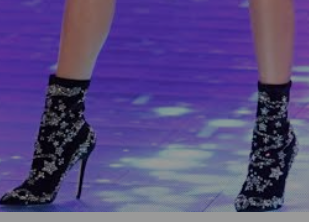This post is brought to you by Soutdoors.
Hiking through mountainous terrains and places covered with heaps of snow is probably what a winter adventure is all about. However, if you want to take the snowy trails with maximum comfort and support and ramp up your flexibility and efficiency when hiking, you need to gear yourself up with the perfect pair of snowshoes. But, there are some factors you need to consider when choosing the best snowshoes.

What Are Snowshoes
Snowshoes are a special type of footwear designed to help you hike over snow. Streamlined with flotation, tough traction, rigid frames and adjustable bindings, with these shoes you can navigate snowy surfaces comfortably without being completely engulfed into the deep snow as you walk.
What Should You Look For in Snowshoes
With the overwhelming options for snowshoes on the market, picking out the ideal pair for your feet can be a bit challenging. To narrow down your options, you should take note of the factors listed below:
Weight
If you are hiking on challenging trails such as snowy surfaces, lightweight gear and equipment make hiking a lot easier. That is why it is important to consider the weight of your snowshoes as they will help you walk better and hike much easier through piles of snow. Therefore, you may go for a pair of snowshoes that has a total weight of 6 pounds or less.
Traction
For a strong grip that will keep you from slipping or losing balance, you need to check the traction. To enhance this feature, many snowshoes come with a traction device known as crampons. These are metal plates crafted with spikes to elevate mobility when you hike through snowy trails whether uphill or downhill or on multiple icy slopes.
Harness Attachment and Bindings
To secure your foot while hiking, taking note of the harness attachments and bindings is important. These are straps that you wrap around the heel and over your boots to keep them essentially intact with your snowshoes.
For a custom fit, bindings come in two types: fixed and rotating. Rotating bindings offer a great advantage when hiking uphill and when walking on groomed snow. As the nether part of the snowshoe drops down, these bindings allow your foot to rotate or move as you walk and hence, lets you stride according to your pace. However, they don’t do well on rough trails and obstacles.
On the other hand, fixed bindings do otherwise. They don’t rotate and perform well on ascending paths, but they are reliable on trail obstructions and bumpy surfaces.
Heel Lift
If you’re up for an adventurous hike or climb, heel lifts or climb bars elevate your heel and secure the height for more efficient hiking. These metal bars also minimize the pressure on your calves, allowing you to hike comfortably.
Flotation
Flotation is responsible for distributing your weight evenly and therefore, boosts your efficiency when hiking, climbing or even running over deep and soft snow. It is also important that your snowshoes feature flotation, particularly when snow conditions seem unpredictable.
Poles
Poles make snowshoeing a lot easier when you navigate all sorts of snowy terrains. They bolster your balance and support whether you’re hiking on deep snow, rocky surfaces, uphill or downhill, snow slush and other snow conditions. One important note, make sure the poles are equipped with wide baskets to keep them from sinking into the loose dirt.
Frame and Decking
The frame and decking make the solid foundation of a snowshoe. Frames are usually made of aluminum while the deck can be built with nylon or rubber to enhance responsiveness but with a lighter feel.
Size
Picking out the size for snowshoes isn’t the same as choosing shoes or boots. You can refer to the manufacturer’s sizing guideline for the precise measurements. Correct size means optimum flotation.
When identifying the size, it is vital to consider your weight or your total weight when carrying your equipment, the snow conditions and surface types. The heavier you are and the deeper the snow or the softer it is, the bigger the size you should get.
Wrapping Up
In a nutshell, snowshoes are essential footwear during winter. When the snow conditions dramatically waver, equipping your feet with the best snowshoes can help you brave different types of snowy trails and obstacles. And to fully benefit from their features, sifting through the significant factors as mentioned above will lead you to the perfect fit for your feet!




